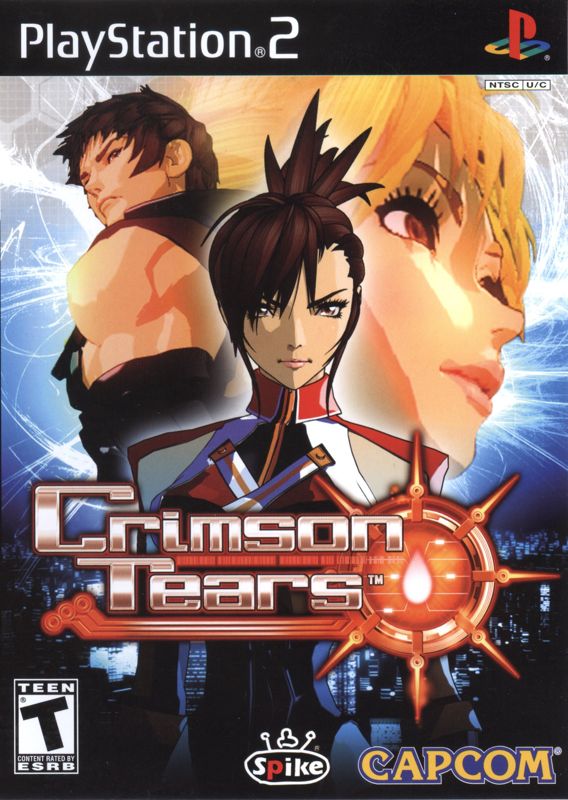Retro Replay Review
Gameplay
Crimson Tears delivers a fast-paced action experience that blends hack-and-slash combat with light role-playing mechanics. Players choose from three unique mutanoids—Amber, Kadie, or Tokio—each boasting distinct movement speeds, attack patterns, and special abilities. The controls feel responsive, allowing you to chain together fluid combos, dodge incoming blows, and unleash powerful area-of-effect moves when the situation calls for it.
(HEY YOU!! We hope you enjoy! We try not to run ads. So basically, this is a very expensive hobby running this site. Please consider joining us for updates, forums, and more. Network w/ us to make some cash or friends while retro gaming, and you can win some free retro games for posting. Okay, carry on 👍)
Exploration takes place across randomly generated stages, meaning no two runs ever feel quite the same. As you venture deeper into the riot-torn streets of Tokyo, you’ll encounter increasingly aggressive enemy types, from street thugs wielding improvised weapons to heavily armored riot bots. The procedural generation keeps exploration fresh, but it can sometimes lead to repetitive layouts or uneven difficulty spikes.
The RPG elements are straightforward yet satisfying. Defeating enemies rewards experience points, which you can then use to level up your character’s base stats. Meanwhile, enemy drops yield weapon components that you combine to forge and upgrade your arsenal. Watching your custom blade grow in power—and standing out less during hectic skirmishes due to fewer repairs—adds a tangible sense of progression.
A unique twist in Crimson Tears is the temperature meter that governs each mutanoid’s activity. Fight too recklessly and your body heat escalates, forcing you to pause or take strategic cover to cool down. This mechanic injects an extra layer of tactical decision-making, preventing button-mashing runs and encouraging you to balance offense with moments of cautious defense.
Graphics
Visually, Crimson Tears showcases the strengths and limitations of its hardware generation. Character models are well-detailed for their time, with smooth animations that highlight each mutanoid’s agility and power. Attacks feel weighty and kinetic, thanks to carefully tuned motion frames that make every slash and punch land with satisfying impact.
The game’s environments capture a dystopian Tokyo in turmoil, from neon-drenched alleyways to crumbling subway tunnels. Dynamic lighting effects—flickering streetlamps, glowing neon signs, and the occasional flare of explosions—lend atmosphere to the chaos. Texture work can be blocky up close, but moving swiftly through the corridors makes these imperfections fade into the background.
Enemy designs are imaginative, mixing human rioters with cybernetic constructs and mutated beasts. Each adversary type sports a distinct color palette and silhouette, ensuring you can quickly identify threats even in the thick of battle. Boss encounters, though few, ramp up the spectacle with towering models and dramatic camera angles that accentuate their scale.
Story
The narrative premise of Crimson Tears is simple yet engaging: you’re a bio-engineered “mutanoid” on a mission to rescue your missing creator and father figure, Dr. Kosugi. Set against the backdrop of a riot-stricken Tokyo in 2049, the storyline taps into themes of loyalty, identity, and family in a gritty cyberpunk context. While the overarching plot doesn’t stray far from established tropes, it hits every emotional beat with just enough sincerity to keep you invested.
Each character you control offers a slightly different perspective on the central quest. Amber’s fierce protectiveness, Kadie’s unwavering determination, and Tokio’s calm rationality provide narrative variety through brief cutscenes and in-mission dialogue. Though voice acting sometimes feels stilted, the performances generally convey the urgency of the mission and the bond between mutanoids and their creator.
Progression through the story is paced by mission-based stages, where objectives range from simple “clear out enemies” tasks to more involved “escort” or “defend” scenarios. While side missions are limited, the randomized stage elements inject small surprises and encourage replaying chapters to uncover every corner of the sprawling urban labyrinth.
Overall Experience
Crimson Tears stands out as an action-RPG hybrid that remains enjoyable decades after its initial release. Its strengths lie in dynamic combat, compelling character progression, and a richly realized vision of a futuristic Tokyo. For fans of fast-paced melee combat with an RPG twist, it delivers addictively replayable missions and satisfying gear upgrades.
However, the game’s reliance on procedural stage generation can sometimes lead to overly repetitive environments or unexpected difficulty spikes. Players who prefer handcrafted level design may find these elements a bit rough around the edges. Additionally, the story, while heartfelt, follows a fairly linear path without branching outcomes or deep moral choices.
Ultimately, if you’re seeking an adrenaline-fueled journey through a broken metropolis, wielding home-built weapons and experimenting with a unique overheating system, Crimson Tears offers a distinctive and rewarding experience. Its blend of experimentation, character customization, and raw action ensures that each playthrough remains engaging, making it a memorable title for both action aficionados and RPG enthusiasts alike.
 Retro Replay Retro Replay gaming reviews, news, emulation, geek stuff and more!
Retro Replay Retro Replay gaming reviews, news, emulation, geek stuff and more!




Reviews
There are no reviews yet.